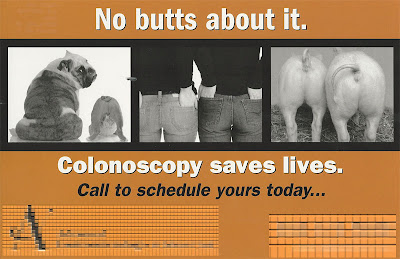Make it easy on yourself to get your video to web at the right size, the first time and every time.
 |
A group of Player choices displayed by EZWebPlayer.com
|
The easiest way to handle fitting a video into a player on the Web properly so that there are no black filler bars on the sides, top or bottom, is to employ a web player that automatically senses your video's shape. My favorite web player is
EZWebPlayer.com because it actually includes "Autodetect" as one of its default player profile settings. This is obviously a large help to all web video uploaders such as myself.
Creating videos that fit perfectly wherever they land is a lot like framing pictures. Nobody tries to frame an 8 x 10 portrait with a 12 x 12 frame. They don't match. You'd end up with something filling the extra space by default; whatever was back there -- cardboard, paper, empty space -- whatever. And the same is true for fitting the video into its web player properly.
This short article explains a few basics so that the novice can get a better handle on how to proceed when placing videos on the Web.
Why the Confusion? Who's Idea Was This Anyway?
The video camera manufacturing community didn't have enough Monday morning planning sessions before they all started releasing their latest video camera creations on us, the buying public. Actually, the obverse is true; they are in hot competition with each other and each is trying to out-do the others in the never ending task of gaining our attention and more market share. Therefore, new features, formats and cosmetics are constantly being poured out the doors of Japanese, Taiwanese and Malaysian factories to be loaded onto the big ocean going cargo ships to be unloaded on California docks so that Best Buys all over The U.S. can eek out an ever decreasing profit margin to the millions of us who have to have the latest and greatest video gadget [ ** insert wind-sucking breath-rush here ** ].
Thus, we have a lot of different video cameras with a lot of different capabilities; including digital 35mm cameras that also double as really high end video cameras.
As far as frame size and shape goes, the result is that there is no longer a true standard default video frame size; it just no longer exists, because each manufacturer decided to have their cameras shoot in Wide as well as Standard, both of which can be anywhere from 1920 pixels wide and up, down to a postage stamp size of 100 pixels and smaller. There are some more heavily used shapes and frame sizes than others, but basically, the sky's the limit. This is actually a good thing as it allows us, the end users to have more choices.
So, when you pick up your video camera to start shooting for the first time, at what default size and shape is your camera set? Since no manufacturer is forced to follow the same "default" settings, there is no good all encompassing answer to this. You may not even know in what frame size you are shooting until hours of video have already been captured. And Heaven forbid that more than one person used the same camera, and someone changed the settings in mid project.
See the problem?
Compounding the issue is the fact that no two camera operators have the same level of expertise and understanding of
- How video works in general
- What will the video look like when it is deployed to the web or a DVD
- Is there a way to standardize all of the videos after they have been shot
- Why they were roped into being responsible for the company video in the first place
In reality, the higher number of cameras start out with a default video size and shape that will help your first video out of that camera to fit into either a 16:9 wide screen or 4:3 standard. But there is no guarantee.
Good news for existing footage.
There is some good news for the project manager who is stuck with minutes upon endless minutes of videos on one topic, but in eleven different size formats -- or even several different media, like VHS, DVD, 16mm film, etc. There are some streamlining ways to make good use of these different sized and formatted videos. But, the best scenario would be to plan ahead before shooting next time.
At the end of this article, I will briefly explain a "fix" for conforming several different video formats so that one can do something intelligent with them, in one project.
Getting it right before shooting.
Before shooting, decide how you want to share the video when it's all finished. Experienced producers have a grasp on what types of videos do well as Wide Screen, when one should use the standard 4:3 ratio, or when a custom size is preferred. After making that decision, one would set the camera to the desired format, whether it be wide screen, the older 4:3 ratio, or something custom.
If you do not have the luxury of choosing different shooting sizes because of equipment limitations, simply choose the highest quality that is appropriate and available so that you can post edit to whatever you need with as few quality issues as possible.
But, there are some things that you need to know in case you do have the ability to choose frame size and shape. The entire web and video industries are now geared for HD and wide screen. For all business purposes I wouldn't even consider 3D. Let's not go there. Unless you have a 3D-centric issue that requires 3D affects, stay away from it. 3D can severely increase the required post production and disc duplication budget, as well as critically reduce the size of the audience who will even watch your production.
All things being nominal, I would choose HD and shoot in the highest available quality with a frame size at 16:9 ratio, 1920 x 1080 square (1.0) square pixel shape. Shooting at these higher quality and larger sized settings allows for more choices in distribution.
I'm assembling an important project but have so many different source forms. What do I do?
The lowest common denominator for the highest desired production quality; that is your issue. You have a low resolution VHS mixed in with several higher res. DVD quality and higher sources. That lower res. VHS can be treated two ways to be useful. You can either keep it at its lower quality and include it inside the project as a smaller framed Picture-in-picture video, or you can bring the entire project down to the quality of the VHS. The second choice is not recommended, for quality issues.
I vote for the PIP option as treatment for the lower quality VHS clip. The audio will usually be very good, or at least good enough to understand everything, assuming it was recorded properly to begin with.
Other solutions of bringing all to one conformed post production style can include cropping, prerendering into a larger, more complex format like AVI before rendering down to your final h.264, or MP4, F4V or whatever you choose for your final render. Prerendering into an AVI codex, editing all in that form, and then rendering to an h.264 will allow you to adjust parameters like color level, hue, white balance adjustment, light level, black knee adjustment, etc.
These are all basics for a seasoned tech producer/director and should be handled by such if the project is important enough that it will be representative of a significantly important institution or company, and will be viewed by a large viewing audience, whether at an upcoming event, or to be made public in an archive reachable over a long period of time.
In the end, you will still have to make a decision when rendering for the Web to match your final render's size to the player size for the Web. If the player size for the web needs to fit into a 640 x 480 player, then the render should be at that size, or larger but at the same ratio, to avoid the video not fitting properly into the Web player.
"I thought you called this a short article", you might be thinking right now. Well, this is a relatively short article when one considers that for each type of video project, thousands of words can be written on work flow, audio tips, best rendering forms and codices depending on end use and archiving.
Today, a rough search and quick count using Google resulted in over 300 separate video file extensions. A file extension is the video file type in the form ".mov" which is a famous and well-used video file format created by Apple. Other examples are h.264, MP4, F4V, FLA, WMV, MJPG. Pages and pages can be written about each one of these, which I did not intend in this article.
Feel free to contact me with specific questions regarding video formats, editing, shooting and post production.






















